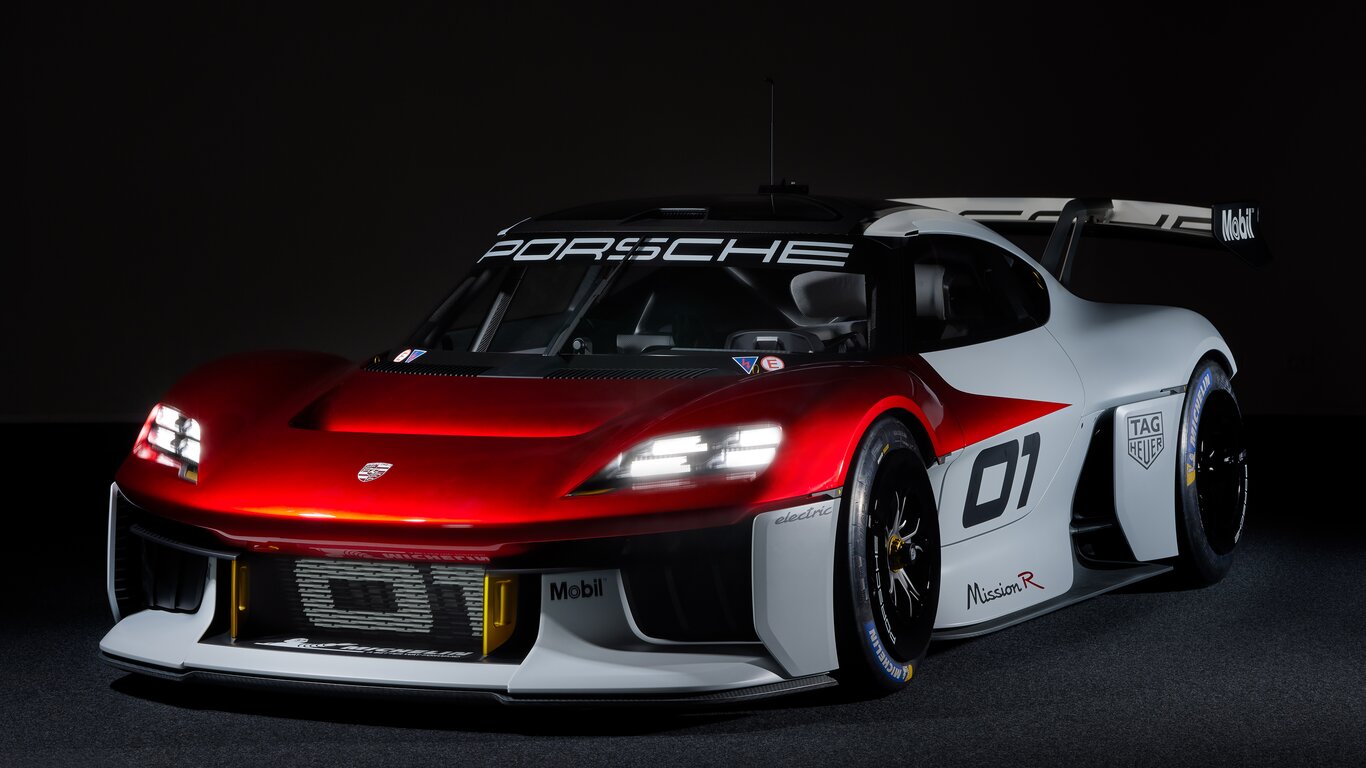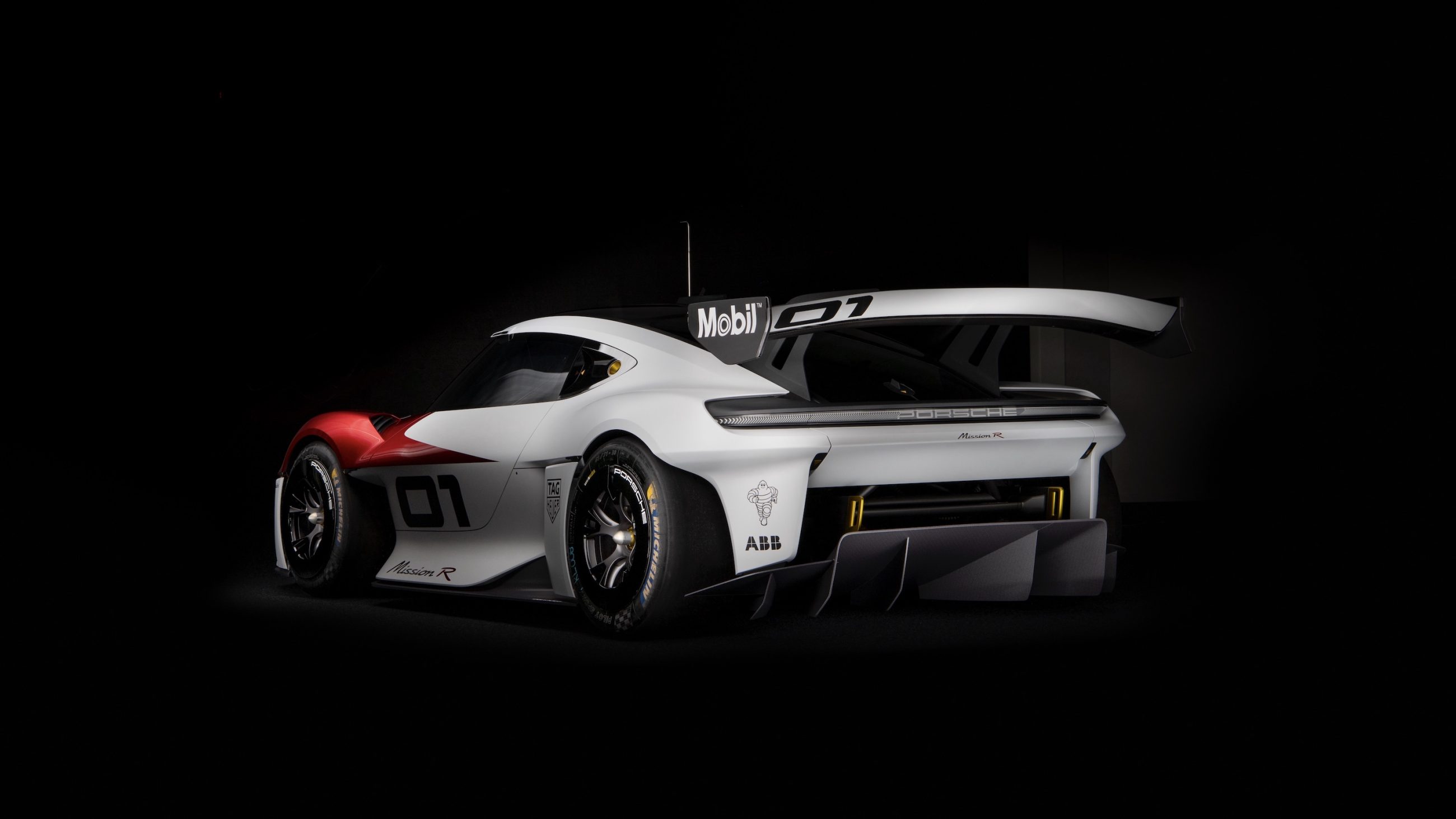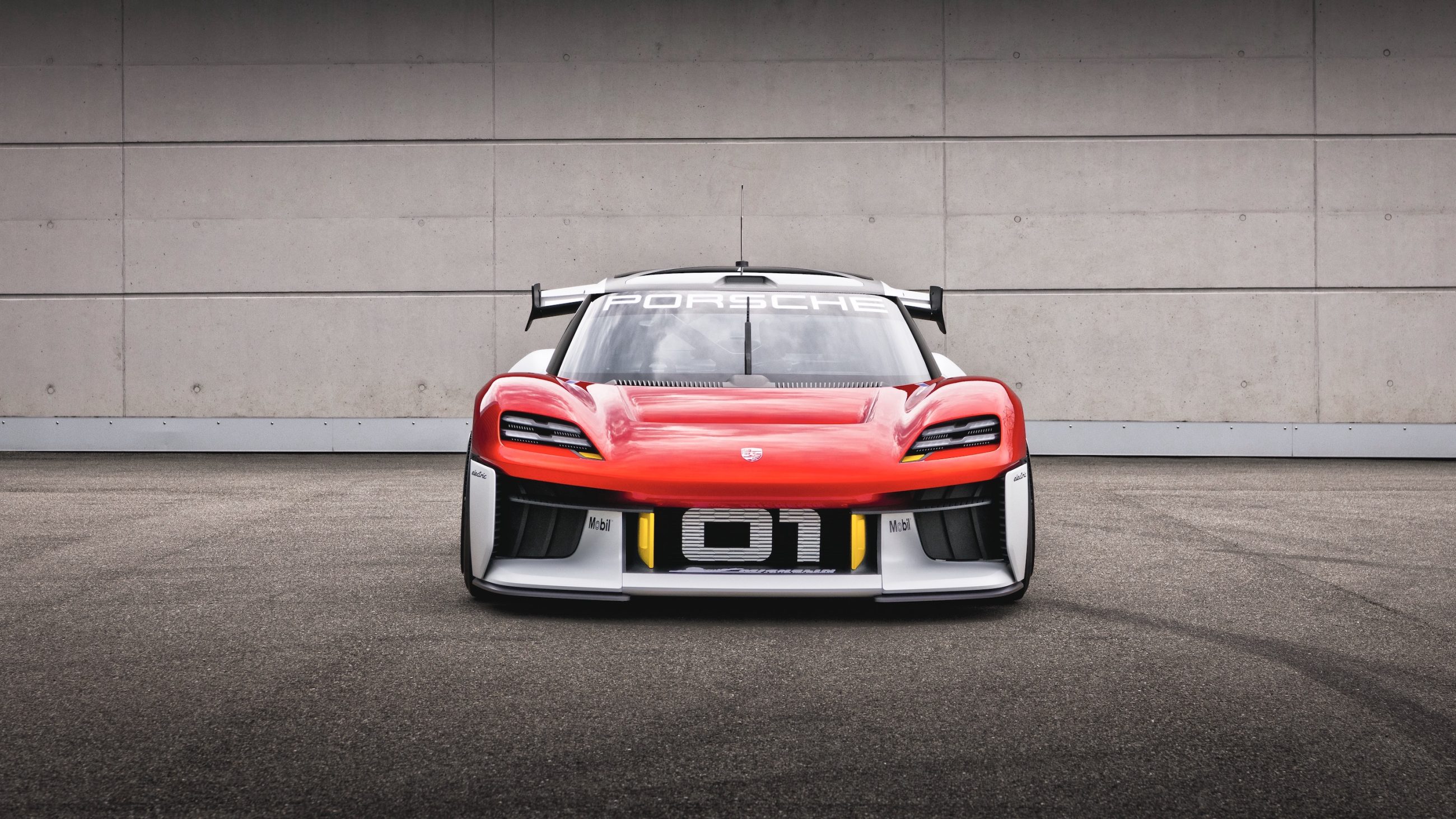2021 Porsche Mission R Electric Concept – Ultimate Guide
We have seen some amazing Porsche concept cars before, but the Mission R seems like a watershed concept that we will remember for a long time – the first fully electric racing prototype Porsche has shared with the world.
The Porsche Mission R concept is intended to equal the performance of the 992-series 911 GT3 Cup, the car used in the well-known Porsche Supercup and Carrera Cup series. Mission R concept features 900-volt fast-charging architecture, an 82.0-kWh battery pack, and modularly integrated front and rear motors with single-speed transmissions featuring straight-cut gears (typical in racing) and mechanical differential locks. The front and rear motors thus provide all-wheel drive and are identical; in “qualifying mode,” they produce a total output of 1,073 horsepower, whereas “race mode” delivers 671 total horsepower. In race mode, the front motor produces up to 429 horses, the rear 644. The Porsche Mission R is theoretically capable of a best 0-60-mph time of about 2.5 seconds and a top speed of 186 mph or so.
It wears Michelin slicks and suspension components borrowed from the 911 RSR. The cooling system for its 80kWh battery is a derivative of the experimental oil-based system developed for the 919, a technology that offers more effective heat transfer than a traditional glycol system while being no more complex or difficult to package. The result is a compact and efficient driveline that can survive a 30-minute sprint race without stopping to charge. Porsche also reckons the R will lap most circuits at roughly the pace of a current GT3 Cup car, so I guess it hit its target then. Charging from five per cent to 80 per cent is claimed to take just 15 minutes, and today the car will run 20-minute sessions on and off without stopping to charge for longer.
Car and Driver: The electric Mission R concept is about the size of the 718 Cayman but wider and lower, and it can hold its own with a 911 GT3 Cup car around the track.
The vehicle itself is the same basic shape as the current 718 Cayman but around 60mm shorter in length, 100mm wider and 100mm lower. It looks as if a Cayman and a Taycan had a baby and then someone chose to sit on the head of that baby, squishing it, though not unattractively. ‘It’s a study,’ Marc Lieb tells me, watching the Mission R take a charge. Lieb has won Le Mans four times as a driver – one of those overall in Porsche’s 919 Hybrid – and is now working PR for Porsche AG. ‘But as always with Porsche, when it’s a study, there are some new and very good ideas behind it.
The exterior design has active aerodynamic components, including three louvers in each of the two side air intakes on the nose section and an adjustable, two-section rear wing. Porsche says the body is made of natural fiber reinforced plastic (NFRP), and the same material can be largely seen in the interior as well. The safety structure of the race car is made of carbon fiber composite material ensuring high protection for the driver. What’s also interesting about the cabin is that the driver’s module also doubles as an esports simulator. Slightly shorter than the current 718 Cayman, the Mission R is just 1,190 millimeters high, 4,326 mm long, and 1,990 mm wide.
Top Gear: There’s a section at Porsche’s Los Angeles Experience Centre where you come firing up a hill over a blind crest, then plunge down through a quick right into a long, cambered-in left then a further right-left flick-flack. The steering wheel never stops moving yet the Mission R charges through it without apparent effort. No sense of the mass working against it, not least because the negative effects of 1,500kg are already offset by a suitably chunky set of slicks – those are from the 911 RSR.
Launch Video
Pictures
Press Release
Porsche to present its future-driven Mission R concept study
09/06/2021
Right on time for the start of the IAA Mobility 2021 in Munich (from September 7-12), Porsche is to provide a spectacular look into the automotive future. The Mission R concept car combines state-of-the-art technologies and sustainable materials, such as natural fiber-reinforced plastics, with a passion for racing.
In addition to a progressive design, the extremely low-slung, all-electric competition car features the characteristic lines of the sports cars from Stuttgart-Zuffenhausen. The two newly developed electric motors incorporated in the Porsche Mission R deliver up to 1,073 hp (800 kW) in so-called qualifying mode. The battery capacity of around 80 kWh and the innovative recuperation system make sprint racing possible with no loss of output.
“Porsche is the brand for people who fulfil their dreams. This is also true in motorsports. We experience our innovative strength on the race track, demonstrate courage in pursuing new avenues and delight car owners with sporting performance,” says Oliver Blume, Chairman of the Executive Board of Porsche AG. “In addition to our involvement in the Formula E World Championship, we are now taking the next big step forward in electric mobility. The concept study is our vision of all-electric customer motorsports. The Mission R embodies everything that makes Porsche strong: performance, design and sustainability.”
Customer motorsports enjoy a high level of esteem at Porsche
Since the start of the Porsche Carrera Cup Deutschland 31 years ago, the sports car manufacturer has produced and delivered more than 4,400 Cup cars from Weissach. A total of 30 one-make cup series are held worldwide on the basis of these reliable, high-performance racing cars. The latest version of the 911 GT3 Cup was not launched until the start of this year’s 2021 motorsport season and is based on the 992 model generation. The Porsche Mission R provides an indication of what the future of one-make series with all-electric cars could look like.
The all-wheel drive car delivering more than 1,070 hp in qualifying mode accelerates from 0 to 60 mph in less than 2.5 seconds. Top track speed: over 186 mph. On the race track, the electric racer achieves the same lap time performance as the current Porsche 911 GT3 Cup. Thanks to newly designed electric motors and battery cells – all equipped with innovative direct oil cooling – the Porsche Mission R concept study produces a constant power output of 671 hp (500 kW) in race mode. So-called derating, i.e. reduction of the battery‘s power output due to thermal conditions, has been eliminated.
900-volt technology and Porsche Turbo Charging
An electric motor with up to 429 hp (320 kW) powers the front axle, while a maximum of 644 hp (480 kW) is delivered to the rear. Thanks to advanced 900-volt technology and Porsche Turbo Charging, a good 15-minute break from racing is all that is needed to charge the battery from 5 to 80 percent SoC (state of charge). Charging can take place with up to 340 kW. The Mission R also features a further development of Porsche Active Aerodynamics (PAA) with Drag Reduction System (DRS) on the nose section and rear wing. It comprises three louvres in each of the two side air intakes on the nose section as well as an adjustable, two-section rear wing.
n addition to the innovative, battery-electric drive concept, the body of the concept car also focuses on CO₂ reduction and sustainability: it is largely made of natural fibre reinforced plastic (NFRP), the basic material of which is made from flax fibers obtained from farming. This ecological material is also used for the front spoiler lip, the diffuser and the side skirts. NFRP is used extensively in the interior of the Mission R, such as the interior door panels, the rear bulkhead and the seat.
The interior design focuses on the driver in all areas. An ergonomically placed display between the controls on the steering wheel shows relevant data during the race. The monitor above the steering column shows the images from the side mirror cameras and the central rear-view mirror camera. A touch display to the right of the seat can be used to call up the driver’s biometric data, for instance. Numerous other cameras in the interior can be used to provide exciting sequences for a live stream transmission.
With the Mission R project, Porsche is bringing real and virtual racing closer together than ever before. The monocoque driver’s module in exactly the same form also doubles as an esports simulator. The safety structure made of carbon fibre composite material combines high protection potential for the driver with low weight and a distinctive look. Porsche engineers and designers have named the newly developed carbon roof structure the “exoskeleton”. It combines safety cage and roof skin. At 4,326 millimeters (170.3 inches) in length, the Porsche Mission R is slightly shorter than the current 718 Cayman series, but it is noticeably wider at 1,990 millimeters (78.3 inches) and with an external height of 1,190 millimeters (46.8 inches) is also significantly lower.
Mission E concept studies by Porsche
In the course of the last few years, with the Mission E (2015) and Mission E Cross Turismo (2018) concept studies, Porsche has given unmistakeable previews of its first all-electric sports car model series to come. The Porsche Taycan sports saloon (2019) and the Taycan Cross Turismo cross-utility vehicle (2021) closely resemble the two concept studies in terms of appearance and technology, and have already been successfully launched on the world markets – mission accomplished in other words. Now, with the Mission R, Porsche is presenting its vision of what customer motorsports will look like in the future. The show car celebrated its world premiere today at the IAA Mobility in Munich.



















